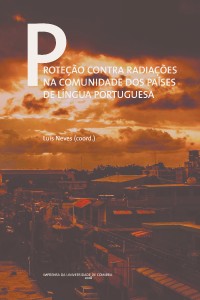Please use this identifier to cite or link to this item:
https://hdl.handle.net/10316.2/44467| DC Field | Value | Language |
|---|---|---|
| dc.contributor.author | Neto, P. C. Silva | |
| dc.contributor.author | Farias, E. E. G. de | |
| dc.contributor.author | Ferreira, F. S. | |
| dc.contributor.author | Cantinha, R. S. | |
| dc.contributor.author | França, E. J. De | |
| dc.date.accessioned | 2018-11-05T22:01:42Z | |
| dc.date.accessioned | 2020-09-05T07:52:00Z | - |
| dc.date.available | 2018-11-05T22:01:42Z | |
| dc.date.available | 2020-09-05T07:52:00Z | - |
| dc.date.issued | 2018 | - |
| dc.identifier.isbn | 978-989-26-1602-5 (PDF) | |
| dc.identifier.isbn | 978-989-26-1601-8 | |
| dc.identifier.uri | https://hdl.handle.net/10316.2/44467 | - |
| dc.description.abstract | The Refúgio Ecologico Charles Darwin - RECD is an Atlantic Forest remaining area located in the Municipality of Igarassu, northern region of Pernambuco State, Brazil. The region is known because of the presence of subsurface uranium phosphorite. Due to the different background radiation previously measured in the region, the present work provided the quantification of the natural radionuclides by High Resolution Gamma-Ray Spectrometry – HRGS in different areas from RECD. Soil samples were collected at the 0-10 cm depth in the ecosystem with high and low radioactivity. After oven-drying at 60 ºC and milling porcelain mortar, analytical portions of 40 g were transferred for polyethylene vials and sealed with silicone adhesive. For the quality of the analytical procedure, the reference material IAEA 314 and the RadCheM Custom soil standard were analyzed with the samples. All materials were analyzed by HPGe detector model GC4018 after 30 days for guaranteeing the secular equilibrium. The mean activity concentrations of 226Ra were (39 ± 10) kg-1 Bq and (32 ± 12) Bq kg-1 for areas with high and low radioactivity, respectively. For 228Ra, the respective mean activity concentrations were (57 ± 21) Bq kg-1 and (33 ± 11) Bq kg-1, indicating that the high radioactivity observed in this area may be associated to the 222Rn exhalation. | eng |
| dc.description.abstract | O Refúgio Ecológico Charles Darwin - RECD é uma área remanescente de Mata Atlântica, situado no município de Igarassu, litoral Norte do Estado de Pernambuco. A região é conhecida pela presença de fosforito uranífero em sub-superfície. Devido às diferentes radiações de fundo medidas previamente na região, o presente trabalho providenciou a quantificação dos radionuclídeos naturais por Espectrometria Gama de Alta Resolução - EGAR em diferentes partes do RECD. As amostras de solos foram coletadas na profundidade de 0-10 cm nas áreas com altas e baixas radioatividades. Após secagem em estufa à 60 ºC e cominuição em almofariz de porcelana, porções analíticas de 40 g foram transferidas para frascos de polietileno e seladas com adesivo à base de silicone. Para o controle da qualidade do procedimento analítico, foram empregados o material de referência IAEA-314 e o padrão interno de solo RadCheMTM Custom Soil Standard. Todas as amostras foram analisadas em um detector de germânio hiperpuro modelo GC4018 depois de 30 dias para a garantia de equilíbrio secular. As concentrações de atividade de 226Ra apresentam médias de 39 (± 10) Bq kg-1 para a parte alta (maior radioatividade), enquanto que, para a parte baixa, as concentrações de atividade com média de 32 (± 12) Bq kg-1. Para 228Ra, as respectivas médias foram 57 (± 21) Bq kg-1 e 33 (± 11) Bq kg-1, indicando que a alta radioatividade observada nesta área está associada com a exalação de 222Rn. | por |
| dc.language.iso | por | - |
| dc.publisher | Imprensa da Universidade de Coimbra | por |
| dc.relation.ispartof | http://hdl.handle.net/10316.2/44443 | por |
| dc.rights | open access | - |
| dc.subject | Atlantic Forest | eng |
| dc.subject | natural radionuclides | eng |
| dc.subject | uraniferous phosphorite | eng |
| dc.subject | RECD | eng |
| dc.subject | Pernambuco State | eng |
| dc.subject | Mata Atlântica | por |
| dc.subject | radionuclídeos naturais | por |
| dc.subject | fosforito uranífero | por |
| dc.subject | RECD | por |
| dc.subject | Estado de Pernambuco | por |
| dc.title | Quantificação de radionuclídeos naturais em solos de um fragmento florestal de Mata Atlântica do Estado de Pernambuco, Brasil | por |
| dc.title.alternative | Natural radionuclides quantification in soils of an Atlantic Forest forest fragment from the Pernambuco State, Brazil | eng |
| dc.type | bookPart | por |
| uc.publication.firstPage | 253 | - |
| uc.publication.lastPage | 261 | - |
| uc.publication.location | Coimbra | por |
| dc.identifier.doi | 10.14195/978-989-26-1602-5_25 | - |
| uc.publication.section | Capítulo 6 - Radioatividade natural | por |
| uc.publication.digCollection | PB | por |
| uc.publication.orderno | 25 | - |
| uc.publication.area | Ciências Naturais | por |
| uc.publication.bookTitle | Proteção contra radiações na comunidade dos países de língua portuguesa | - |
| uc.publication.manifest | https://dl.uc.pt/json/iiif/10316.2/44467/201118/manifest?manifest=/json/iiif/10316.2/44467/201118/manifest | - |
| uc.publication.thumbnail | https://dl.uc.pt/retrieve/11017843 | - |
| uc.publication.parentItemId | 55071 | - |
| uc.itemId | 68229 | - |
| item.fulltext | With Fulltext | - |
| item.grantfulltext | open | - |
| Appears in Collections: | Proteção contra radiações na comunidade dos países de língua portuguesa | |
Files in This Item:
| File | Description | Size | Format | |
|---|---|---|---|---|
| quantificacao_de_radionuclideos_naturais.pdf | 303.95 kB | Adobe PDF |  |
Items in DSpace are protected by copyright, with all rights reserved, unless otherwise indicated.
